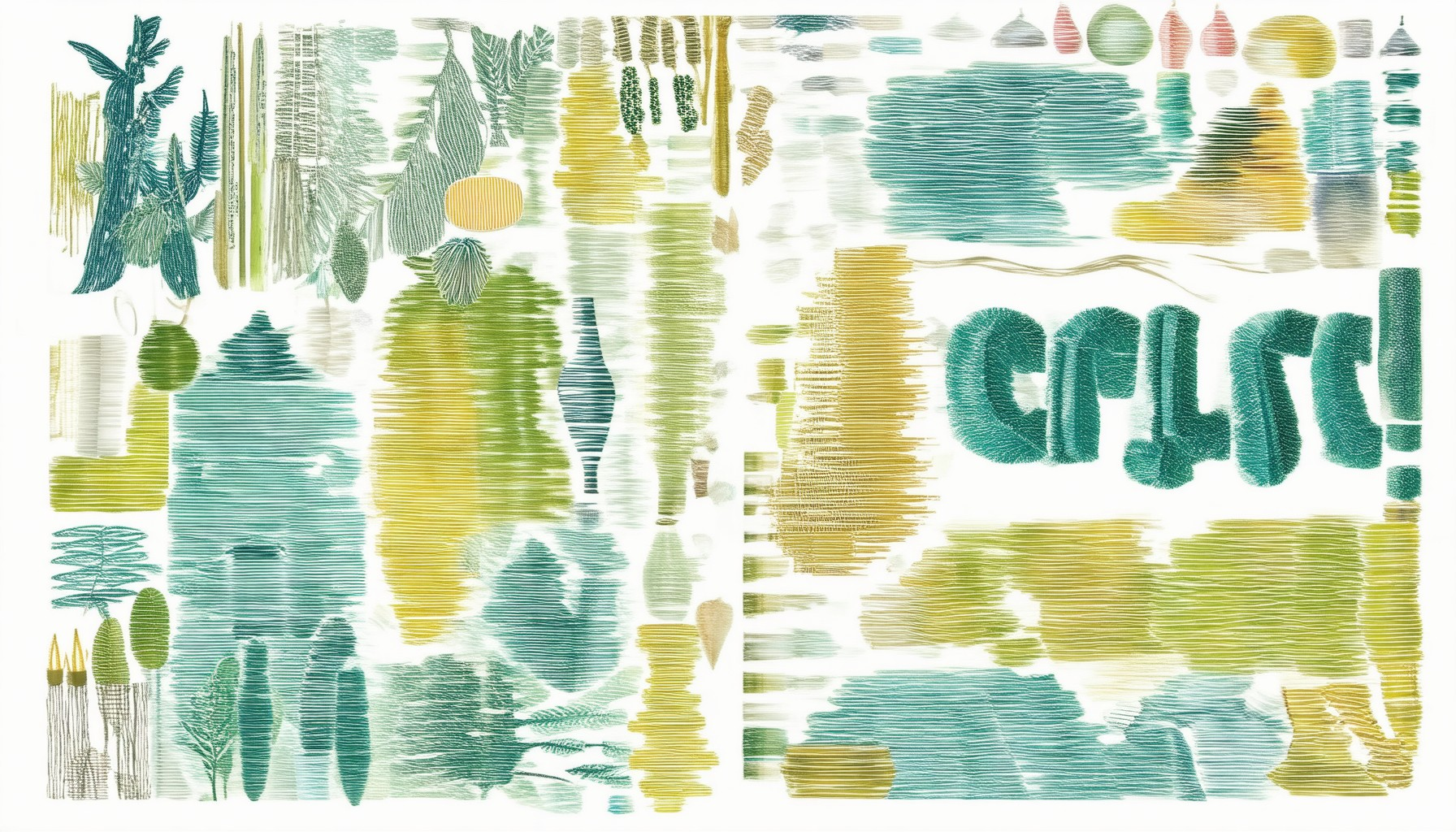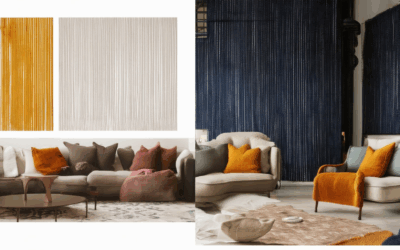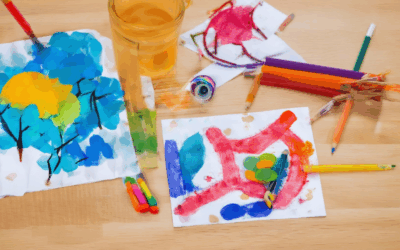In today’s world, making a meaningful impact has never been more important, especially when it comes to crafting. While traditional crafting methods often come with environmental trade-offs, sustainable crafting offers a game-changing solution. By embracing eco-friendly craft supplies and ethical art supplies, creators can transform their craft into creations that not only inspire but also protect our planet. Whether you’re crafting for kids, adults, or yourself, sustainable craft kits and eco-friendly craft paint provide innovative ways to reduce waste and promote responsible practices. This guide dives into the ins and outs of sustainable crafting, exploring everything from the definition of eco-friendly crafting to the best materials for eco-friendly projects. Discover how you can create beautiful, earth-conscious art while making a positive difference—one craft session at a time.
Key Takeaways
– Eco crafting reduces waste by reusing materials and minimizes environmental impact.
– It encourages a mindful, sustainable lifestyle and can be done on a budget with readily available materials.
– Popular eco crafting materials include recycled paper, fabric scraps, tin cans, natural elements, and plastic containers.
– Handmade products are often more eco-friendly than mass-produced items, using sustainable materials and low energy consumption.
– Craft ecosystems foster creativity, economic impact, and personal growth by connecting craftspeople, materials, culture, and community.

Sustainable Crafting
Sustainable crafting is an eco-conscious approach to creating handmade items that minimize environmental impact while maximizing creativity. At its core, sustainable crafting focuses on repurposing materials that would otherwise go unused, thereby reducing waste and promoting a greener lifestyle.
Core Principles of Sustainable Crafting
- Utilizing recycled materials: Transform discarded items like fabric, glass bottles, cardboard, and plastic into functional and decorative pieces.
- Upcycling: Give new life to unwanted objects by adding value through modification or transformation.
- Minimizing waste: Crafters aim to use every part of materials, reducing landfill contributions.
- Choosing sustainable materials: Opt for organic, non-toxic, or locally sourced supplies whenever possible.
Benefits of Sustainable Crafting
- Reduces environmental footprint: Lowering consumption of new resources and decreasing waste.
- Supports local communities: Buying handmade goods often benefits artisans and small businesses.
- Encourages creativity: Sustainable crafting provides a therapeutic outlet and fosters innovation.
Getting Started with Sustainable Crafting
Pravylo Project is a great resource for those looking to explore sustainable crafting ideas. Whether you’re interested in DIY projects, art journaling, or upcycling furniture, our platform offers a variety of creative options to get started:
Materials Needed
- Recycled materials: Look for second-hand goods or scraps from local businesses.
- Basic crafting tools: Scissors, glue guns, needles, and measuring tapes.
- Inspiration: Explore tutorials and project ideas on Pravylo Project to find the perfect sustainable craft.
Popular Sustainable Crafting Ideas
- Bag-making using fabric scraps or recycled materials.
- Creating jewelry from repurposed materials like broken jewelry parts or beads.
- Upcycling old clothing into patchwork quilts or trendy fashion accessories.
- Making household items like reusable cloth bags or natural cleaning products.
Join the Movement
Discover thousands of sustainable crafting ideas and connect with a community of passionate creators on Pravylo Project . Share your projects, learn from others, and find inspiration to make a positive impact on the planet while enjoying the creative process.
Competitors and Resources
Explore more sustainable crafting ideas on platforms like Etsy and Pinterest , which offer a wealth of tutorials and projects to inspire your next eco-friendly creation.
Is Crafting Eco-Friendly?
Crafting can indeed be eco-friendly when approached thoughtfully and sustainably. By repurposing materials and using renewable resources, crafters can minimize their environmental impact while creating unique items. Here’s how you can make crafting eco-friendly:
Eco-Friendly Materials
When selecting materials for your crafting projects, consider the following sustainable options:
- Recycled Paper: Use scrap paper, old newspapers, or cardboard to create cards, bookmarks, or decorative pieces. Recycled paper reduces the demand for virgin paper production.
- Upcycled Items: Transform discarded household items like tin cans, plastic bottles, or fabric scraps into functional and artistic crafts. This reduces waste and gives new life to unwanted materials.
- Sustainable Wood: Choose wood from responsibly harvested forests or repurpose wooden pallets for projects like birdhouses or furniture.
- Plant-Based Dyes: Opt for natural dyes made from plants like turmeric, beetroot, or indigo rather than synthetic chemicals. These dyes are biodegradable and have fewer environmental impacts.
Sustainable Techniques
Adopt eco-conscious techniques to enhance your crafting process:
- Hand-Made Tools: Create your own tools or repair existing ones instead of buying mass-produced items. This reduces the carbon footprint associated with manufacturing new tools.
- Minimalist Approach: Focus on creating simple, functional items that reduce waste. Minimalist designs often require fewer resources and materials.
- Local and Seasonal Ingredients: When crafting with natural materials like flowers, herbs, or fruits, use locally sourced ingredients to support local economies and reduce transportation emissions.
- DIY Repair Kits: Assemble your own repair kits for clothing or household items. This reduces the need for disposable fast fashion and promotes longevity of products.
Getting Started with Eco-Crafting
To begin your journey toward eco-friendly crafting, consider visiting platforms like Pravylo Project for inspiration and tutorials. Explore projects that reuse common household items and share your creations to encourage others to join the movement.
By incorporating these practices, you can enjoy crafting while contributing positively to the environment. Remember, every small effort counts toward a more sustainable future.

Sustainable Products to Make
Creating sustainable products involves repurposing materials, reducing waste, and using eco-friendly ingredients. Here are some ideas for making sustainable products:
Upcycled Furniture
- Transform discarded wood into decorative items like coffee tables or shelves.
- Repurpose old cardboard into storage boxes or wall art.
- Convert plastic bottles into planters or organizers.
- Turn scrap metal into decorative pieces or functional tools.
Zero-Waste Beauty Products
- Make natural face masks using ingredients like avocado or oatmeal.
- Create reusable cloth facial pads instead of disposable ones.
- Formulate eco-friendly deodorants using baking soda and essential oils.
- DIY hair ties from cotton or bamboo fabric to reduce plastic waste.
Eco-Friendly Kitchen Essentials
- Carve cutting boards from fallen tree branches.
- Make reusable beeswax food wraps for storing leftovers.
- DIY cloth napkins or dishcloths instead of paper ones.
- Repurpose glass jars into storage containers or plant pots.
Sustainable Art Supplies
- Use recycled paper for sketchbooks or collages.
- Make paintbrushes from natural materials like bamboo.
- DIY canvas bags from old bed sheets or fabric scraps.
- Repurpose cardboard into artistically designed frames or sculptures.
Tips for Choosing Sustainable Products
- Look for products with minimal packaging and recyclable materials.
- Support brands that use fair trade practices and sustainable sourcing.
- Purchase products in bulk or refillable containers to reduce waste.
- Choose locally-made or handmade items to minimize transportation impact.
By creating and using these sustainable products, you contribute to reducing environmental impact while embracing eco-conscious living. Explore more ideas and projects on our website to inspire your next creative project!

What is Eco Crafting?
Eco crafting is a sustainable art form that combines creativity with environmental consciousness. It involves using recycled materials, natural elements, and repurposed items to create unique handmade products. The goal of eco crafting is to minimize waste, reduce resource consumption, and promote a greener lifestyle.
Benefits of Eco Crafting
- Reduces waste by reusing materials that would otherwise go unused
- Minimizes environmental impact by conserving resources
- Encourages a more mindful and intentional approach to consumption
- Can be done on a budget using readily available materials
- Offers a sense of accomplishment and personal growth
Popular Eco Crafting Materials
- Recycled paper and cardboard
- Fabric scraps or old clothing
- Tin cans, bottles, and other household trash
- Natural elements like driftwood, stones, and plants
- Plastic containers and packaging materials
Why Choose Eco Crafting?
- Personal satisfaction from creating something useful and beautiful
- Eco crafting is often more affordable than traditional crafting supplies
- It contributes to a more sustainable and eco-friendly lifestyle
- Perfect for those looking to reduce their carbon footprint
- A great way to engage in creative problem-solving
Getting Started with Eco Crafting
To begin your eco crafting journey, gather materials you already have lying around or visit local recycling centers for free supplies. Start with simple projects like making paper sculptures, woven bags, or jewelry. Experiment with different materials and techniques to see what works best for you.
Are Handmade Products Eco-Friendly?
Handmade products are often considered more eco-friendly than mass-produced items due to their reduced reliance on industrial processes and resources. However, their environmental impact can vary depending on the materials, techniques, and energy sources used during production.
Pros of Handmade Products
- Sustainable Materials: Many handmade items are crafted from recycled or organic materials, minimizing environmental degradation.
- Low Energy Consumption: Artisanal production typically requires less energy compared to industrial manufacturing, which often relies on high-energy machinery.
- Reduced Waste: Handmade goods may generate less waste since they are often made to order or in small batches, reducing excess production.
- Local Production: Handmade products often support local economies, reducing the carbon footprint associated with long-distance transportation.
Cons of Handmade Products
- Variable Quality: The environmental impact can vary depending on the artisan’s practices and materials.
- Production Scale: While beneficial for the environment, handmade products may not always be as cost-effective or accessible as mass-produced items.
When evaluating handmade products, consider factors like the type of materials used, the energy sources, and the artisan’s commitment to sustainable practices. Look for certifications like Fair Trade or organic labels to ensure eco-friendly production methods.
For more information on sustainable materials and practices, explore our guide to sustainable crafting or check out our DIY tutorials for tips on creating environmentally conscious handmade items.

What is Craft Ecosystem?
A craft ecosystem is a dynamic network of interconnected elements that collectively support and enhance the practice of crafting. At its core, it encompasses the relationships between craftspeople, materials, knowledge, culture, community, and environment. These elements work together synergistically, creating a thriving ecosystem that fosters creativity and craftsmanship.
Key Components of a Craft Ecosystem
- Craftspeople :
The heart of any craft ecosystem lies in the individuals who create handmade goods. These include artists, designers, hobbyists, and professionals who bring their unique skills and imagination to their work. - Materials :
High-quality materials are essential for crafting. They range from traditional tools and raw ingredients to modern innovations like digital fabrication tools and eco-friendly materials. - Knowledge :
Crafting relies heavily on knowledge passed down through generations. This includes traditional techniques, innovative methods, and the science behind materials and processes. - Culture :
Craft is deeply rooted in cultural identity. It reflects the values, beliefs, and histories of communities, making it a powerful tool for preserving heritage and inspiring future generations. - Community :
A vibrant community is crucial for the survival and growth of a craft ecosystem. It includes workshops, guilds, festivals, and online forums where creators share ideas, collaborate, and learn from one another. - Environment :
The physical spaces where crafting takes place, such as studios, workshops, and public venues, play a vital role in shaping the ecosystem. They provide the infrastructure needed for creating, teaching, and showcasing craft.
How the Elements Interact
Each component of the craft ecosystem influences and is influenced by the others. For instance, advancements in material technology can lead to new creative possibilities, while cultural shifts can change the demand for certain types of craft products. This interconnectedness creates a self-reinforcing cycle that drives innovation and sustainability.
Examples of a Thriving Craft Ecosystem
One example of a thriving craft ecosystem is the Pravylo Project, a platform dedicated to fostering creativity among DIY enthusiasts and makers. It offers a wealth of resources, including tutorials, project ideas, and community support, helping users explore various craft projects and develop their skills. By bringing together passionate individuals and providing them with the tools and inspiration they need, Pravylo Project exemplifies the power of a craft ecosystem.
Benefits of a Craft Ecosystem
A well-established craft ecosystem offers numerous benefits, including:
- Creativity and Innovation : The interaction of diverse elements sparks new ideas and approaches to crafting.
- Economic Impact : Crafts contribute to local economies, supporting small businesses and creating jobs.
- Personal Growth : Engaging in crafting fosters skill development, mindfulness, and a sense of accomplishment.
By nurturing these elements, we can build a robust craft ecosystem that continues to evolve and thrive, enriching our lives and communities.





0 Comments